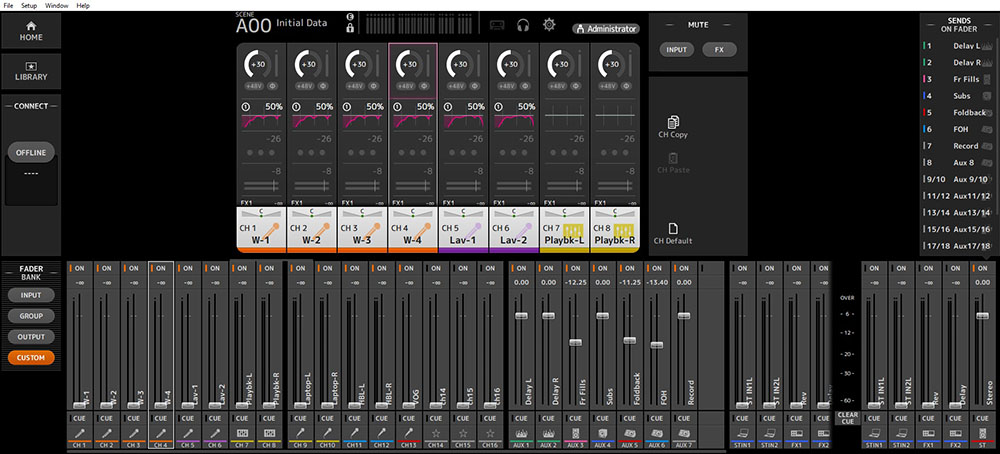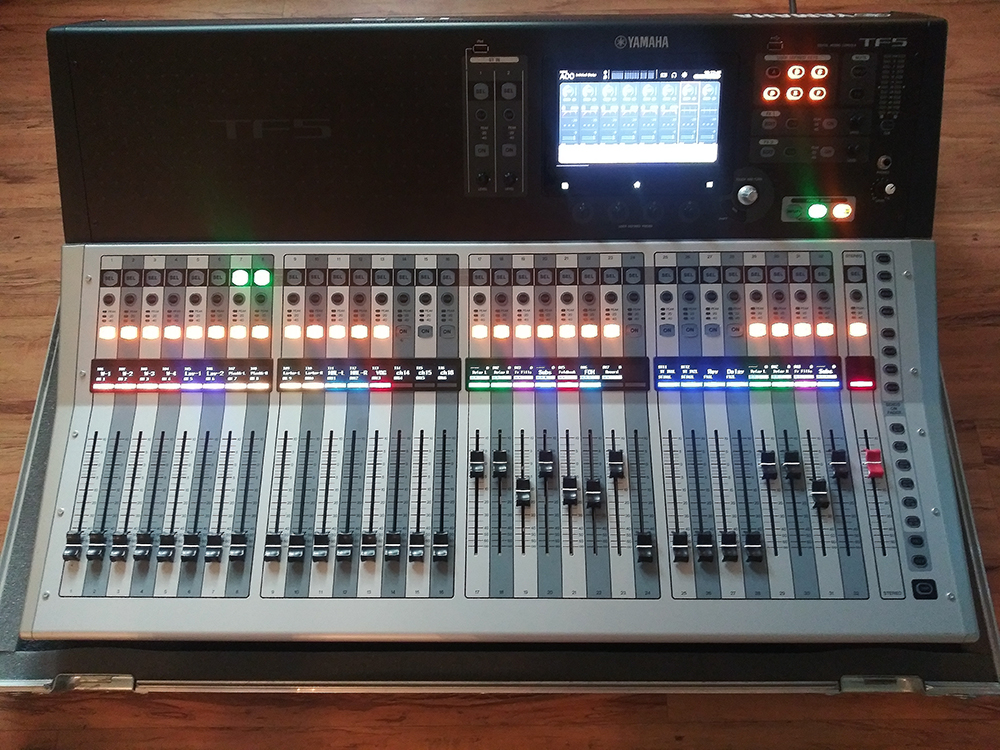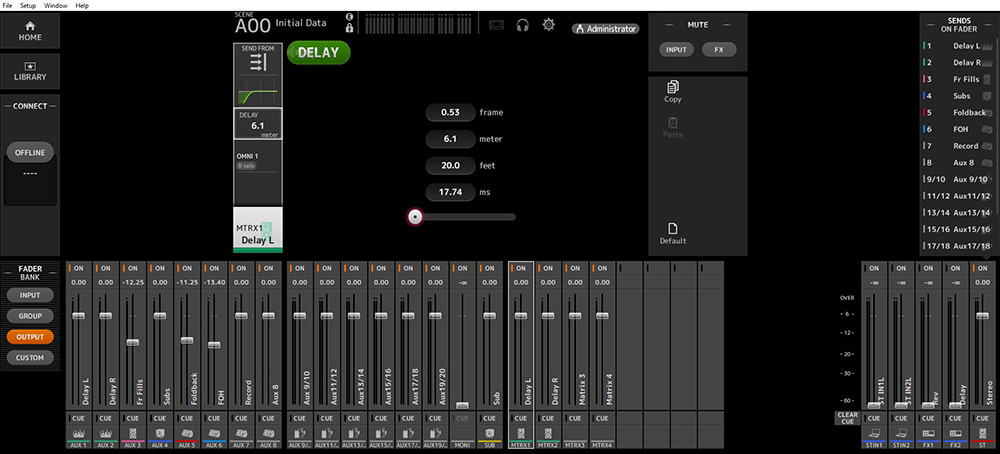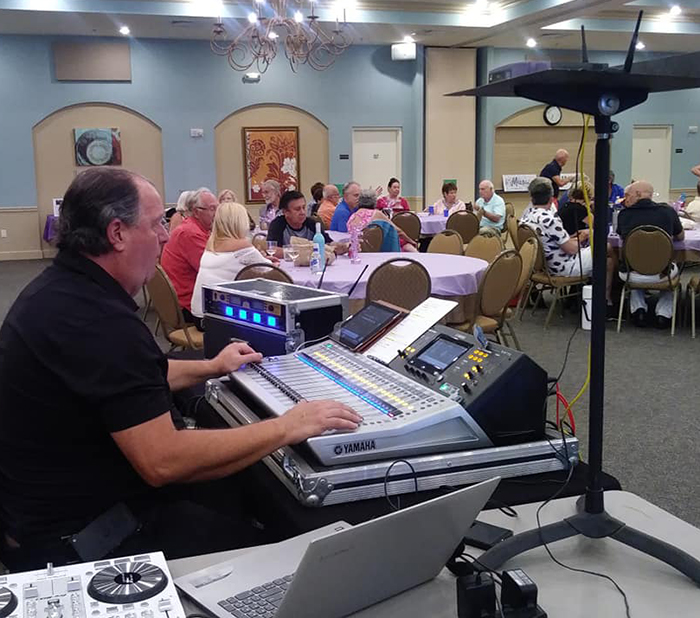As a non-touring local audio freelancer in Orlando, my typical gig is nothing like touring with a band. I do corporate events almost exclusively, which can be equally demanding if not more so. In this article, I’m detailing my setup and signal path with the acknowledgement that there are as many different ways of doing things are there are those of us doing them. My purpose is to provide some ideas based on what works for me.
The particular event that I’m presenting here is a gathering of about 800 in attendance, and I’m deploying my personal gear, as opposed to being called in to operate equipment that belongs to the in-house provider, a rental house, or an AV company. My mixer is a Yamaha TF5, and you can see my I/O setup on the offline editor (Figure 1) or the photo of my board (Figure 2).


My Input List:
Channels 1 – 4: Wireless handheld microphones
Channels 5 & 6: Wireless lavalier microphones
Channels 7 & 8 (linked): Video playback laptop, R&L Channels 9 & 10 (linked): Music playback laptop, R&L
Channels 11 & 12 (linked*): Live band that comes with self-contained audio (more about this later)
Channel 13: VOG (“Voice of God,” or an announcer).
Channels 14, 15, and 16: Unassigned but available if needed.
*On my TF5, as on most (if not all) digital boards, it’s possible to link two adjacent input channels, so that when either fader is adjusted, the linked fader moves with it. Also, any adjustments in equalization and other functions are duplicated on the linked channel.
My Output List:
Mains
Aux 1 & 2 (not linked): Delays
Aux 3: Front fills
Aux 4: A pair of active subwoofers, positioned at the mains
Aux 5: Foldback (a pair of passive stage floor wedge monitors)
Aux 6: A Hotspot-style personal monitor at FOH
Aux 7: Record send
The mains and delays are passive loudspeakers on stands. The aux sends do not have delay function, so aux outputs 1 and 2 are routed through a matrix in order to delay the output by the appropriate amount. In the latest firmware update, Yamaha has added four matrix outputs with delay capability, and I find four to be a sufficient number of delay outputs for corporate events like this one. In fact, for this event, I used only two of the four.
Further Factors
If you’re new to all this and wondering what delays are, they are additional loudspeakers that cover audience areas a significant distance from the mains. The audio signal sent to these loudspeakers is delayed by a certain number of milliseconds so it’s in sync with the arrival of sound from the mains, thus avoiding something that sounds like a really distracting echo.
The delay time is determined by the distance of the delay speakers from the mains, figuring the speed of sound at roughly 1,130 feet per second. It’s affected by temperature, so I use 1,130 ft/s as a starting point and adjust as necessary. What will really bake your noodle is that the temperature changes as the room fills with people!
For this event, I needed only two sends for the delays (left and right), so I have two aux sends routed through two matrix sends (Figure 3).And since the subs are located with the mains, I don’t delay either one of those.
Speaking of left and right: stereo means nothing in live sound unless listeners are located equidistant between the left and right loudspeakers, and even then it’s not foolproof. The reason I like to mix in stereo is so I can pan the left or right loudspeaker off when someone with a live mic decides to walk in front of it. This happens a lot in corporate events.

Sometimes I’m brought in to operate a system that others have set up, and they invariably “daisy-chain” the loudspeakers, driving the entire system in mono and eliminating the ability to pan control, so when the presenter walks in front of a loudspeaker with a live microphone, I have to shut down the channel.
I try to educate presenters when I give them the mic, but they often forget or just aren’t paying attention when they begin to roam, or when the Q&A mic is being passed around. For this particular gig, the left and right inputs from a single source are both panned to center.
On the mic channels, I’m running the Dugan automix feature that comes with the TF5, which I find very helpful when I have several open mics on a corporate gig. It’s much better than gates or riding the faders.















